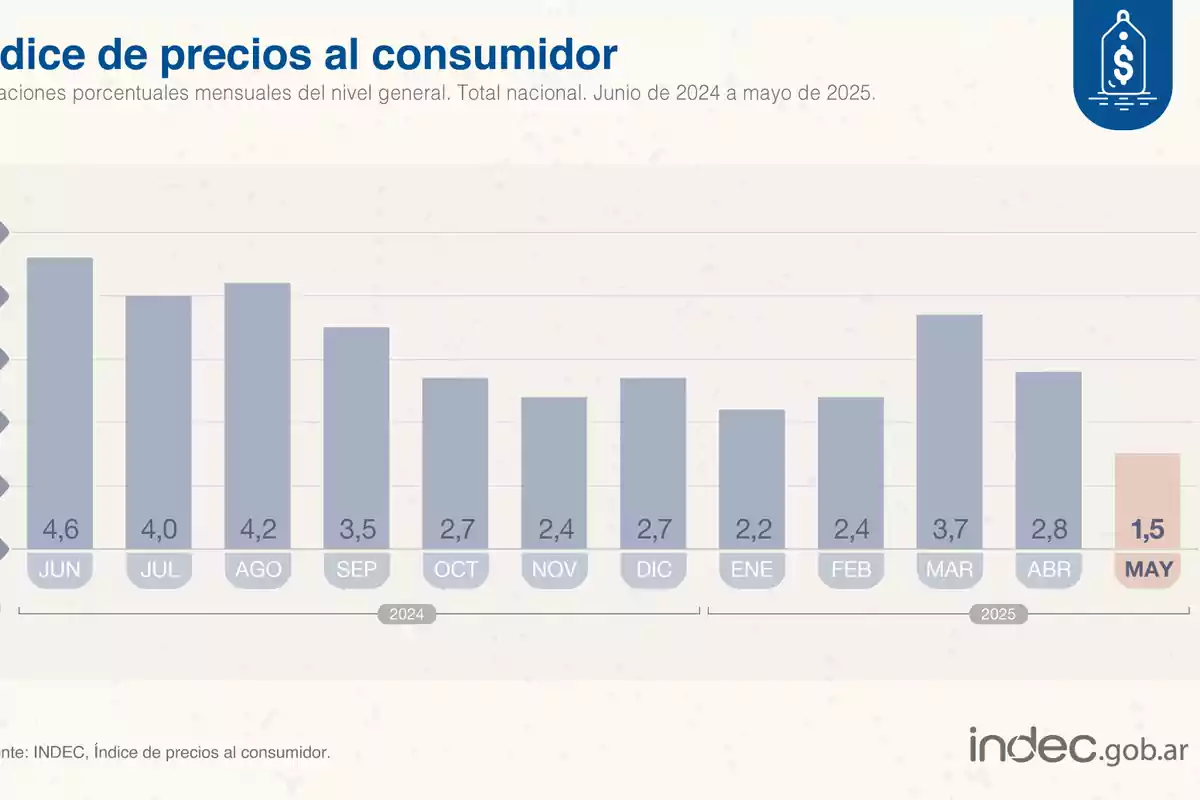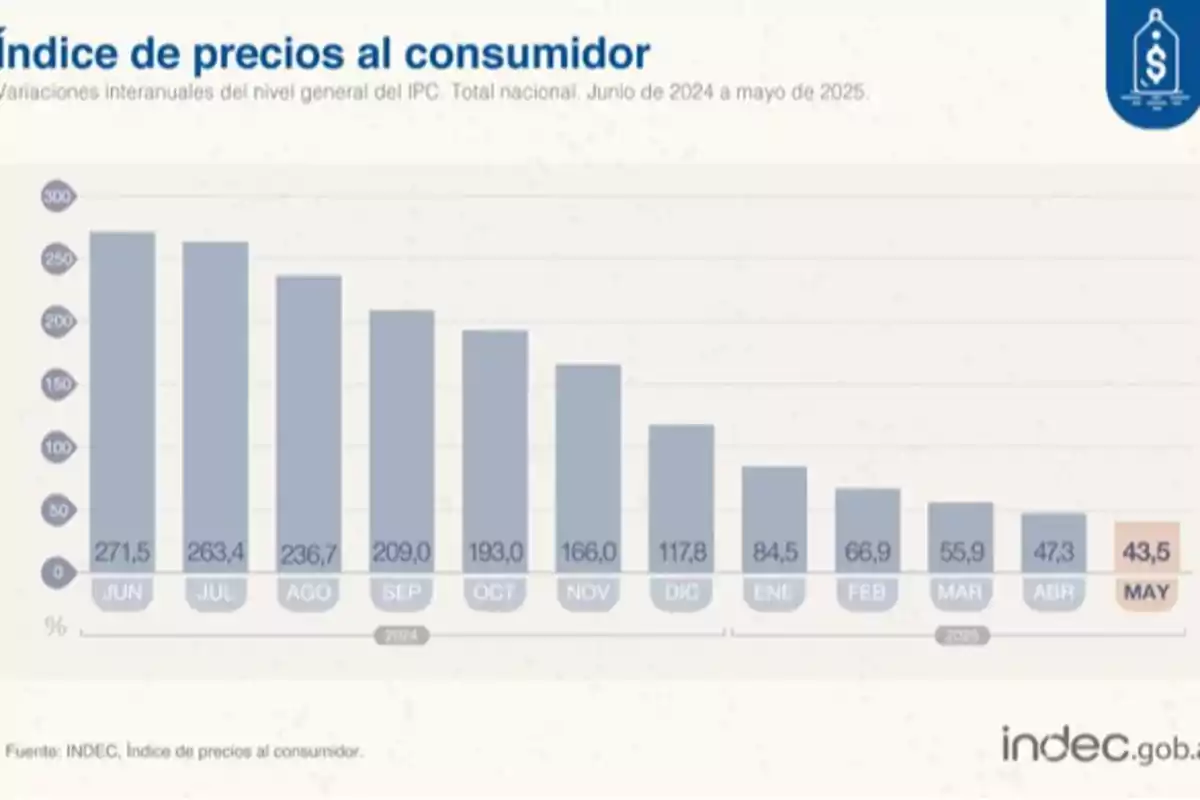
May inflation fell to 1.5% and is now at its lowest level in 5 years.
Thanks to the Milei Government's successful economic plan, inflation continues to fall sharply
The National Institute of Statistics and Censuses (INDEC) reported this Thursday that May inflation was 1.5%, thus marking the lowest level in five years. With this figure, Javier Milei's government continues to demonstrate the success of its fiscal discipline and monetary stabilization policy, after years of sustained increases in the Consumer Price Index (CPI).
The May figure shows a sharp monthly slowdown, in a process that began after President Milei took office in December 2023, when monthly inflation reached a peak of 25.5% due to the last Kirchnerist government of Alberto Fernández and Cristina Kirchner, which left the country on the brink of hyperinflation.
In year-on-year terms, the variation dropped to 43.5%, representing a sharp slowdown compared to the nearly 300% levels recorded in the first months of the libertarian government.

Since then, the economic team led by Luis "Toto" Caputo has managed to impose a strong fiscal and monetary anchor, which is reflected in the downward trend in price increases.
Private analysts had already anticipated inflation close to or below 2%, but the official number confirms that Argentina is entering a new stage, with stable prices, a controlled exchange rate, and expectations of a strong economic recovery.
Inflation by category
Additionally, sensitive categories such as food and beverages, health, transportation, and education showed variations below the average, directly benefiting the most vulnerable sectors.
In the breakdown by category, the Communication division led May's increases with a rise of 4.1%, driven mainly by adjustments in telephone and internet services. It was followed by restaurants and hotels, with an increase of 3%, explained by the seasonal rise in tourism and gastronomy prices.

In contrast, one of the most sensitive categories for household budgets, food and non-alcoholic beverages, recorded a modest increase of just 0.5%, well below the general average, representing significant relief for families, especially in lower-income sectors. This could anticipate a new drop in the poverty and indigence index.
Another key figure reflecting the improvement in purchasing power is the behavior of the basic baskets. In May, the Total Basic Basket (CBT), which measures the poverty threshold, increased by just 0.1%, while the Food Basic Basket (CBA), which defines the indigence line, recorded a deflation of 0.4%, marking a notable drop in essential products.
This dynamic means that a typical family needed practically the same income as the previous month to avoid being considered poor, and even less to cover their minimum food needs. The figure is a resounding achievement for Milei's government.
More posts: